This is the most familiar and beloved California oak — the tree that cities and high schools are named for. A big live oak is a tree to treasure, protect and build a landscape around; it will dictate the microclimate of your garden, overseeing birds, moths and squirrels as well as what grows beneath. If you have the space, you can plant your own nursery-grown live oak. It will grow faster than you think and most likely outlive you — live oaks in the wild live several hundred years or more.
Be aware of potential oak maladies. Trees often succumb to soil diseases brought on by summer watering. And, sadly, a relentless pathogen called sudden oak death is striking live oaks and spreading throughout the state. Native oaks are so well loved and deserving of protection that there are organizations, such as the California Oak Foundation, dedicated to saving them.

Las Pilitas Nursery
Botanical name:
Quercus agrifoliaCommon name: Coast live oak
USDA zones: 9 to 11 (find your zone)
Water requirement: Light; existing trees usually suffer if watered in summer.
Light requirement: Full sun
Mature size: Potentially enormous with time — up to 70 feet tall with an equal spread
Weaknesses and tolerances: Susceptible to oak root fungus; avoid summer watering. Subject to defoliation by oak moths. Most serious is sudden oak death, a pathogen that has been killing thousands (or millions) of Northern California’s coast live oaks and related species for the past two decades.
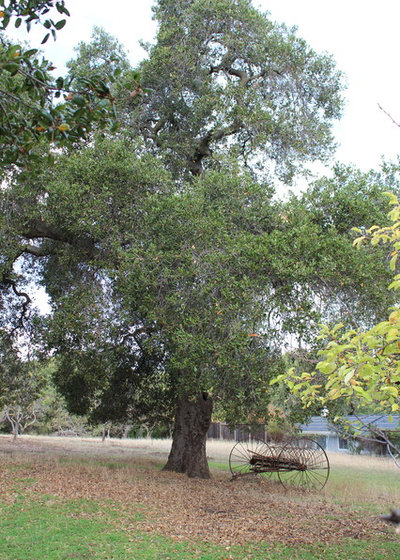 Distinguishing traits
Distinguishing traits. On hilltops and valley floors, its dense canopy of foliage and thick trunk create an unmistakable image of the disappearing agrarian and wild California.
The evergreen leaves are oval, stiff and spiny. Note here in this patch of suburban open space that grass doesn't grow beneath the tree, and that fallen leaves create a natural mulch — an attractive and healthy situation to emulate in a garden setting.
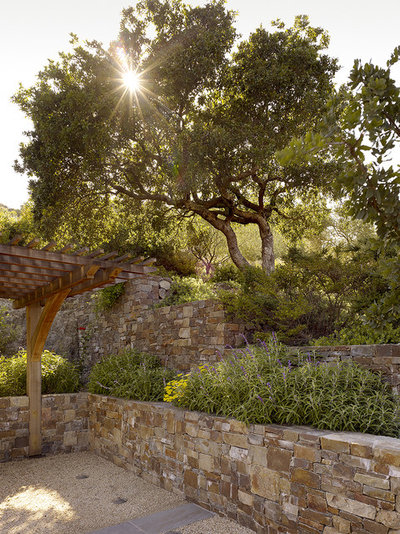
Blasen Landscape Architecture
How to use it. A live oak is a shade maker, a tree to build a fort in, to climb in, to hang a swing from. Younger trees, as in this design by Blasen Landscape Architecture, look perfectly at home in wilder or casual parts of a garden.
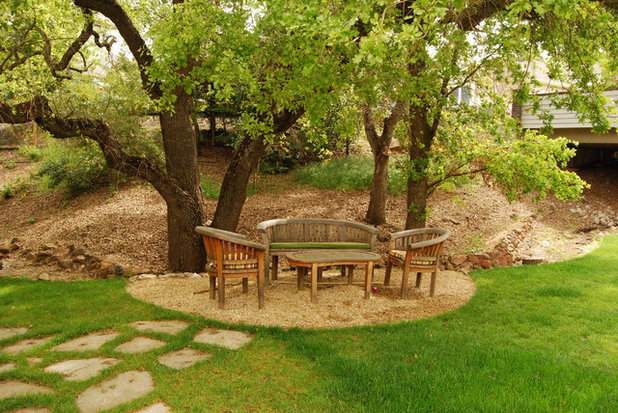
Envision Landscape Studio
Because of their size and untidiness (dropping leaves, catkins, acorns), live oaks are best at the edge of property, in a somewhat natural section. Don't plant lawn or ground covers under existing old trees; this encourages root diseases. It’s also better not even to pave the soil surface. Trees that you plant generally withstand garden watering better; try to avoid summer watering. Mulch, gravel or stones undeneath, as shown here, is healthier and looks more natural.
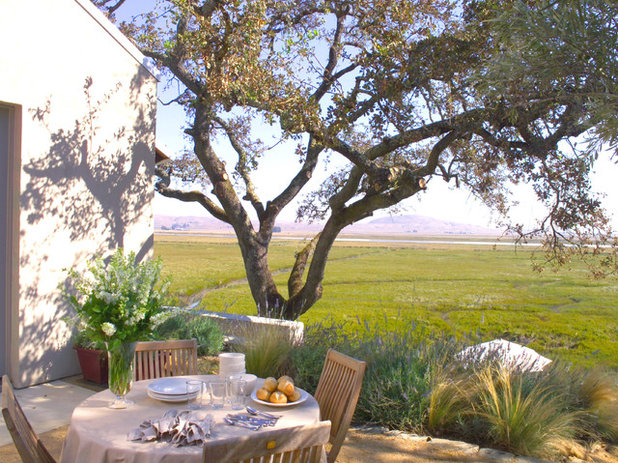
Sutton Suzuki Architects
Live oak thrives and looks best with other California natives and Mediterranean plants, such as manzanita,
ceanothus, lavender and
rosemary. Pruning out whole branches can control the size a bit, open up a view and neaten up the tree's form.
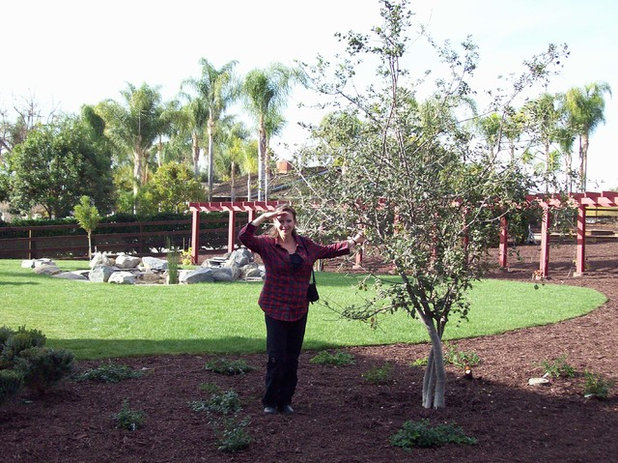
Botaniscapes by Tracey
Planting notes. Young trees grow surprisingly fast. You can start with nursery plants, available in containers from gallon size to boxes 10 feet square. Choose single-trunk or multiple-trunk shapes. To create a naturalistic grove, plant several trees. Locate live oak away from a lawn or other spot that gets heavy summer watering, and plant it in full sun.
Make sure the drainage is good. Generally there's no need to amend the planting soil. You'll need to water the tree regularly, even in the summer, for the first few years. Provide a sturdy stake. If you live around wildlife, protect young tree trunks from deer, rabbits and other critters.
The main pest is the oak moth caterpillar, which can shred a tree every now and then. If you see caterpillars falling out of the tree or descending on silk webs, or if you notice signs of defoliation, call a professional tree service. Spraying for oak moths is a major project.
The most fearsome threat to native oaks is sudden oak death, a pathogen that has been killing Northern California’s coast live oaks and related species. (Not all native oaks are susceptible.) The pathogen’s spores spread during the rainy season, and leaves of afflicted trees wilt and die; sap exudes from the trunk and branches. If you notice signs of disease, call a professional arborist.
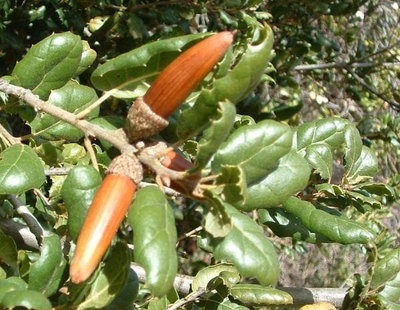
Las Pilitas Nursery
How to grow an oak from an acorn. It’s not hard to start an oak tree from an acorn directly in the ground. Your enemies will be the usual suspects: birds and squirrels. In fall or winter, start with a healthy (no insect holes) fallen acorn.
In a sunny spot, dig a planting hole 6 inches deep and 6 inches wide. Refill the hole with the excavated soil and bury the acorn sideways an inch deep. The acorn should sprout by spring. Water the soil and keep it moist through the first summer at least.
To improve your chances of success, plant at least several acorns a foot or two apart. Thin the survivors to leave just one or two. Create a screen of wire mesh to protect the sprouting seedlings from hungry creatures.
More guides to California landscaping





